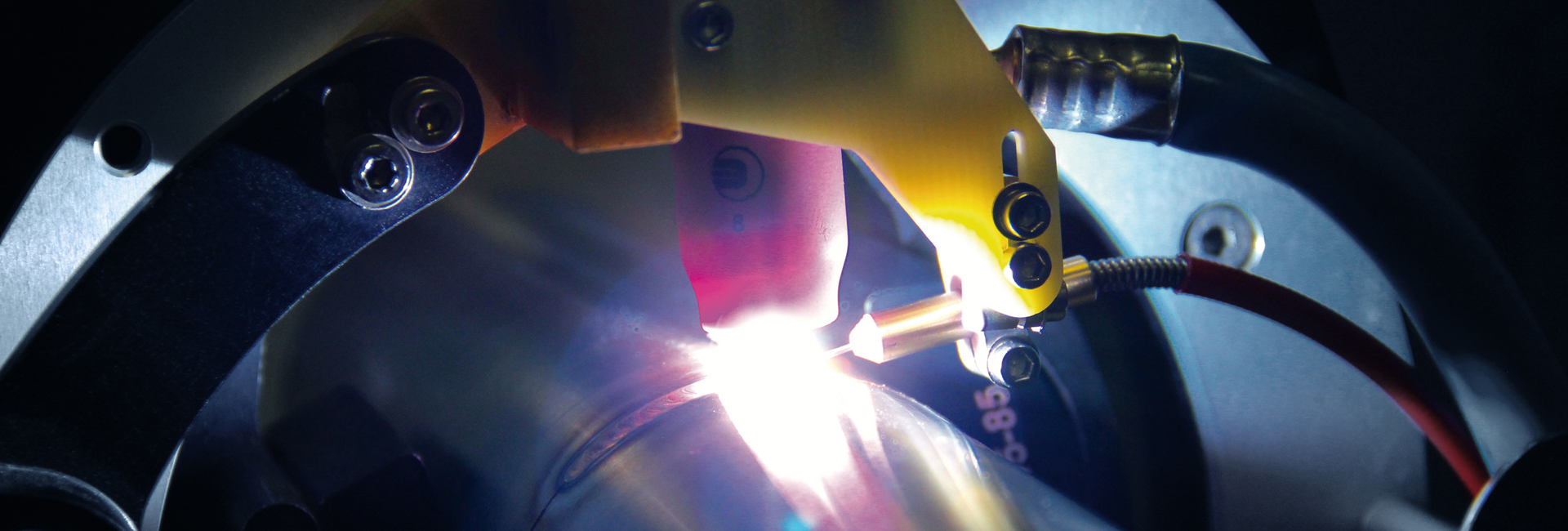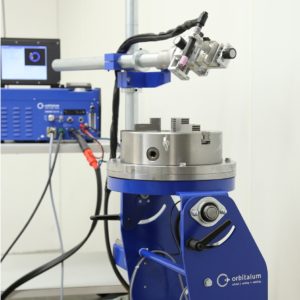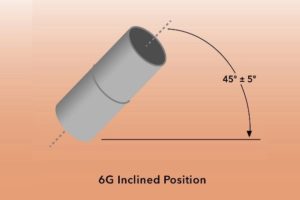
In pipe welding, a pipe welder always encounters demanding welding positions such as 5G and 6G when performing their welding work. Manual welders must be trained and certified in each position in order to perform those types of welds. This is a tedious welding position that requires a great deal of experience, skill and expertise.
Orbital Welding could overcome 5G & 6G welding positions, without the need for certified and skillful welders. It is capable to produce high quality welding joints, consistently in these positions, even in an extremely confine space as shown in below process piping system.

Welding Positions is well described in ISO 15614-1, ASME IX and AWS D1.1 (referring to AWS A3.0).


1G & 2G Welding Positions


In the 1G welding position, the pipe is in the horizontal position and can be rotated along the horizontal (X) axis. In 2G welding position, the pipe is in the vertical position and can be rotated along the vertical (Y) axis, and the welder’s position remains stationary.
Both 1G & 2G welding are commonly found in pipe welding workshop, where the pipes or work-pieces are mounted on a turning device and the weld is usually performed by a manual welder. Welding work in1G & 2G positions is usually repetitive in nature and involve large quantity of pipes joints. Although both works require workers with lower level of welding skill and expertise, it is however repetitive, boring and the least attractive in today competitive welder’s job market.
Orbitalum has developed a DVR Welding System for 1G & 2G welding works, to be used with highly advance computer controlled TIG power source 180SW, 300CA. The welding system requires only a technician (not necessary a welder) to enter 3 basic welding parameters such as tube/pipe OD, wall thickness and shielding gas type into the computer via a HMI touch screen interface. The computer will then compute the required welding procedures and related parameters to control within a minute, and is ready to begin the welding job. A DVR welding system is highly automated, productive and capable to produce weld joints with almost identical quality over and over again. Most importantly it helps to free up your experienced welders for higher value welding jobs.

5G and 6G Welding Positions


In the 5G welding position, the pipe is in the horizontal position, whereas in 6G position, the pipe slopes at approximately 45° from the horizontal (X) axis or 45° from the vertical (Y) axis. Unlike the 1G and 2G position, the pipe is in a fixed position and not rotating. The welder moves around the pipe in the vertical direction to perform the welding. This is most tedious welding position that requires a great deal of experience, skill and expertise. Both 5G & 6G welding are commonly found in the field welding of process piping system.
Orbitalum has developed a solution for your 5G & 6G welding position with Orbital Welding System – using Enclosed Weld-head and Open Weld-head that clamps onto the pipes while the torch will continuously weld and rotate around the work-piece. This welding process is controlled entirely via a highly advance computer controlled power source 180SW , 300CA, 300SW. Again, an orbital welding system requires only a welding technician (not a certified welder) to enter 3 basic welding parameters such as tube/pipe OD, wall thickness and shielding gas type into the computer via the HMI touch screen interface. The computer will then compute the required welding procedures and the related controlled parameters within a minute, and is ready to begin the welding job.
An orbital welding system is highly productive and capable to produce thousands of weld joints with almost identical quality over and over again. Most importantly it helps to free up your experienced welders for other higher value jobs.



Thanks for explaining that tungsten is also often used for orbital welding. I think it would be nice to stock up on orbital welding products soon because that might be helpful for the project that I’m planning to work soon soon. It would involve a lot of reinforcing metal beams so a lot of welding will have to be done.